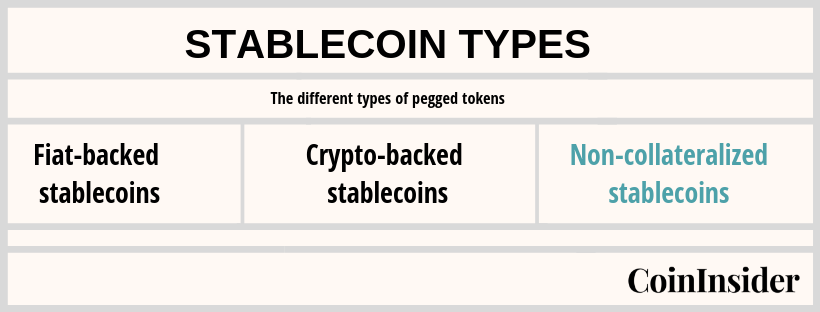Italy’s State-Owned Bank Trials Digital Bonds on Polygon Blockchain
The European Central Bank initiated the trial to explore how blockchains can enhance central bank settlement.

A stablecoin is a cryptocurrency token which has its value pegged at a 1:1 to a stable asset, such as gold or a fiat currency like the US dollar. The fundamental point of a stablecoin is to hold its pegged value, despite the twists and turns of volatility that the cryptocurrency market faces otherwise.
There are three types of stablecoins, namely:

Tokens which are backed by a national currency are called fiat-backed stablecoins. For example, Tether is pegged 1:1 to the US Dollar. A fiat-backed token is the easiest way to develop a stablecoin. All stablecoins are pegged at a 1:1 ratio to an asset. One of the downsides of a fiat-backed token is that it is centralized, which goes against the decentralized connotation that a cryptocurrency generally holds. Tether, in particular, receives a great deal of criticism owing to this.
A cryptocurrency-backed stablecoin is collateralized by a cryptocurrency rather than a fiat currency. For example, Ethereum is locked up in collateral for MakerDao’s DAI. It might seem counter-intuitive to back a stablecoin by a volatile asset, but this is compensated by a “security pledge” which means that the token might not have a 1:1 ratio towards the collateral cryptocurrency despite the fact that it holds a 1:1 ratio to the pegged asset.
Non-collateralized stablecoins make use of a Seigniorage Shares system. Basically, the tokens rely on an algorithm generated mechanically which is able to change the supply volume if needs be so as to maintain the token’s price which is pegged to an asset. Non-collateralized stablecoins rely on smart contracts to sell tokens if the price falls below the peg or to supply tokens to the market if the value increases. In this way, the token remains stable and holds its peg.
The asset to which the stablecoin is pegged could be a fiat currency, such as the US dollar, or a real asset like gold.
Since the stablecoin relies on algorithms and mechanically maintains its peg, there is no need for collateral to back the token’s value, hence the name.
Read more: An overview of stablecoins
Non-collateralized cryptocurrencies are the lesser known stablecoins, but there are a few tokens which are worth noting.
The Carbon Protocol makes use of supply decreasing by issuing Carbon credit through an auction. Users and token holders can bid for Carbon credits in order to burn CUSD, which offers them a discount as the token expands and helps maintain the price. As the token changes value, Carbon sells tokens to readjust the price.
We are excited to announce that we have launched CarbonUSD, a hybrid fiat-algorithmic stablecoin. The fiat token is live on the @ethereum network and can be accessed at https://t.co/Nb56fTi05p Read more @coindesk https://t.co/gFx86Vw3Uy
— Carbon (@carbon_money) September 12, 2018
The Basis Protocol wanted to follow a model based on three elements, namely the Basis tokens, bonds, and shares. The project, however, was unable to launch owing to regulatory issued with the United States security regulations. The Basis website now shows an announcement stating:
“Unfortunately, having to apply US securities regulation to the system had a serious negative impact on our ability to launch Basis… As such, we are sad to share the news that we have decided to return capital to our investors. This also means, unfortunately, that the Basis project will be shutting down.”
The European Central Bank initiated the trial to explore how blockchains can enhance central bank settlement.
n recent months, inflation measures, including the Consumer Price Index and Personal Consumption Expenditures Index, have moderated.
BlockFi clients are to note that client communications will exclusively occur through official email channels.
CryptoQuant CEO says Bitcoin is still vulnerable to “speculative FUDs,” giving smart money a way to buy up cheap BTC.